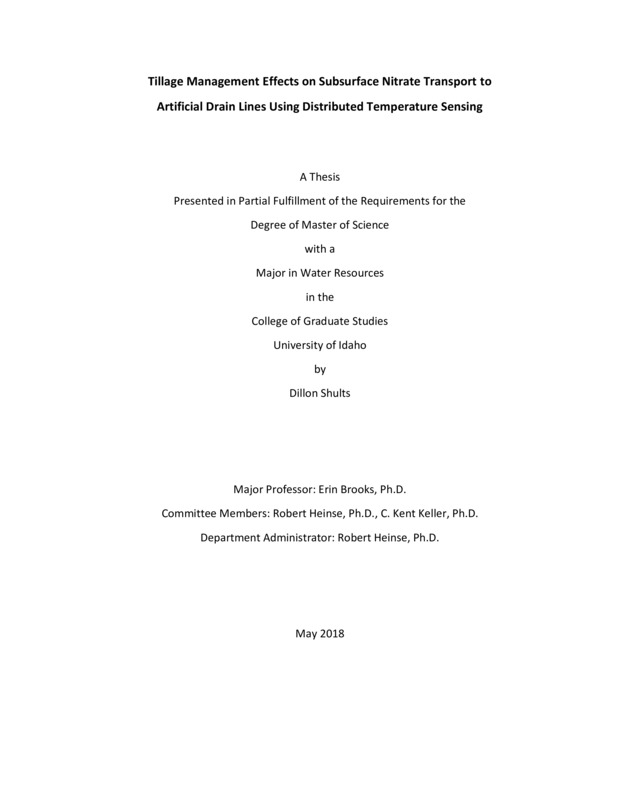Tillage Management Effects on Subsurface Nitrate Transport to Artificial Drain Lines Using Ditributed Temperature Sensing
Shults, Dillon. (2019-05). Tillage Management Effects on Subsurface Nitrate Transport to Artificial Drain Lines Using Ditributed Temperature Sensing. Theses and Dissertations Collection, University of Idaho Library Digital Collections. https://www.lib.uidaho.edu/digital/etd/items/shults_idaho_0089n_11477.html
- Title:
- Tillage Management Effects on Subsurface Nitrate Transport to Artificial Drain Lines Using Ditributed Temperature Sensing
- Author:
- Shults, Dillon
- Date:
- 2019-05
- Program:
- Water Resources
- Subject Category:
- Agriculture; Agriculture engineering
- Abstract:
-
In the Palouse Region, farmers have been adopting no-tillage (NT) management practices over the last 30 years. There is a growing body of evidence that suggests long-term NT practices leads to the establishment of macropore networks through the preservation of earthworm burrows and root channels. These macropores may act as preferential flow paths in the vadose zone. The goal of this study is to quantify and compare the effects of long-term tillage management practices on subsurface preferential flow using distributed temperature sensing technology (DTS) and to assess changes in hydrologic and nitrate transport dynamics and pathways. In this paired watershed study (November 2016 to April 2017) temperature was used as a tracer as snowmelt drained to two artificial drain lines under different tillage management, one draining a conventional tillage (CT) field and the other draining a no-till (NT) field. We found evidence that infiltrated water on the NT field travelled through the vadose zone preferentially as compared to the CT field by observing greater variability of water flow to fiber-optic cables installed in the artificial drain lines (2.2 times the number of temperature decreases greater than 0.35 ºC along each cable), rapid flushing of water through the soil profile (during five early season discharge events the temperature of the drain line reached a minimum temperature 20.9 hours before the CT field), greater relative drops and rapid recovery of EC in NT drainage water during discharge events and early season flushing of nitrate through the soil profile. Major differences were also found in the predominant hydrologic and nitrate transport pathways. Runoff from the CT field (162.8 mm) was much greater than from NT field (0.8 mm) and drain line discharge was 1.4 times greater on the NT field (126.7 mm). On the NT field 100% of nitrate load came through the drain line while on the CT field 55% of the nitrate load came through the drain line and 45% came from surface runoff. Despite these changes in hydrologic flow paths and nitrate transport path ways there was no evidence that tillage management had any effect on the magnitude of total nitrate export to surface water.
- Description:
- masters, M.S., Water Resources -- University of Idaho - College of Graduate Studies, 2019-05
- Major Professor:
- Brooks, Erin S; Heinse, Robert
- Committee:
- Keller, Kent
- Defense Date:
- 2019-05
- Identifier:
- Shults_idaho_0089N_11477
- Type:
- Text
- Format Original:
- Format:
- application/pdf
- Rights:
- In Copyright - Educational Use Permitted. For more information, please contact University of Idaho Library Special Collections and Archives Department at libspec@uidaho.edu.
- Standardized Rights:
- http://rightsstatements.org/vocab/InC-EDU/1.0/

